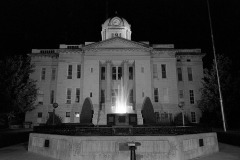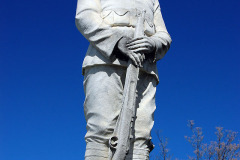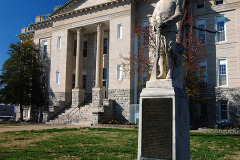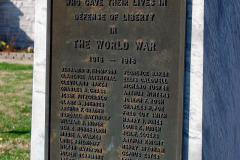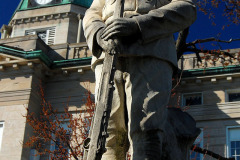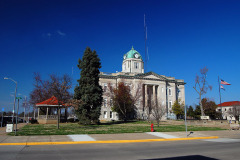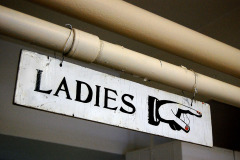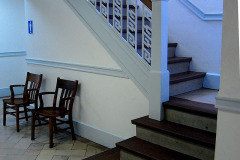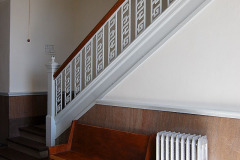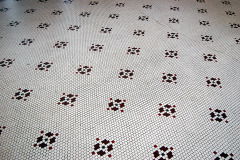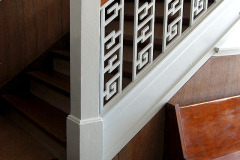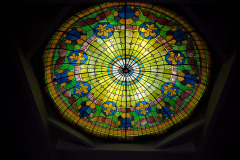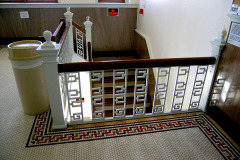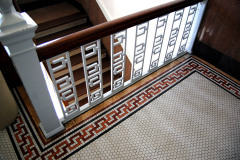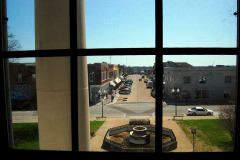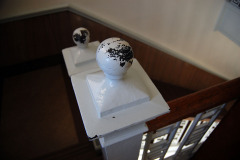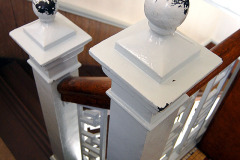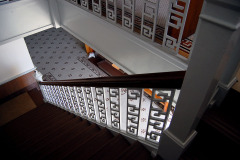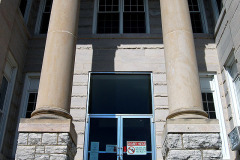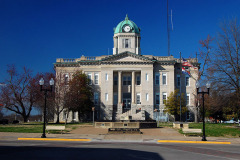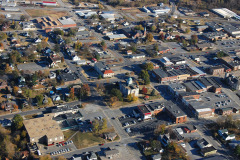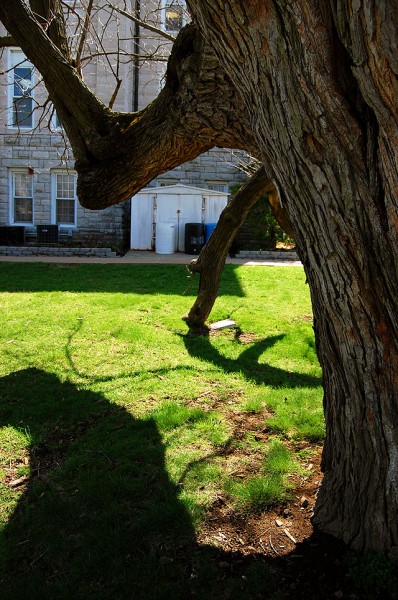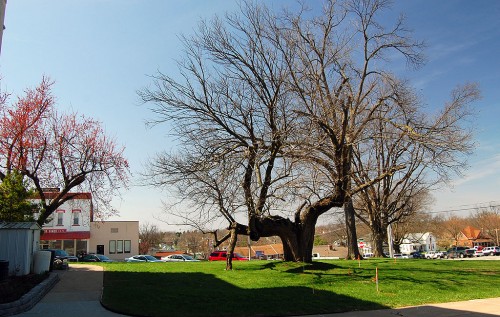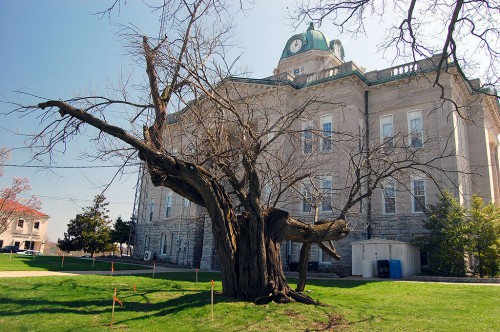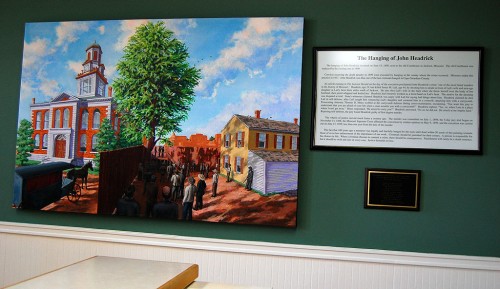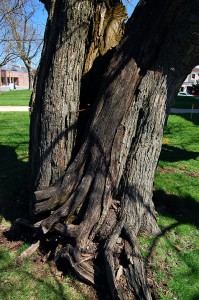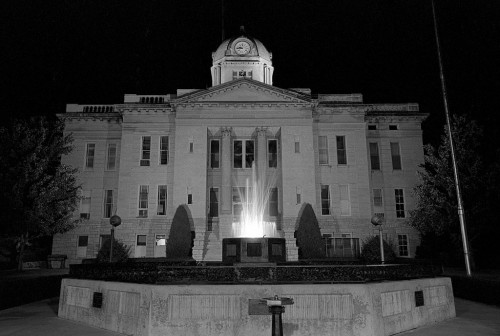 This night photo of the Cape County Courthouse was probably taken when I was working at The Jackson Pioneer in 1964 or 1965. There is a story, maybe true, maybe not, that the Pioneer staff threw food color in the fountain the night Barry Goldwater was nominated for President. They wanted Jackson to wake up to Gold Water in the fountain.
This night photo of the Cape County Courthouse was probably taken when I was working at The Jackson Pioneer in 1964 or 1965. There is a story, maybe true, maybe not, that the Pioneer staff threw food color in the fountain the night Barry Goldwater was nominated for President. They wanted Jackson to wake up to Gold Water in the fountain.
2010 courthouse hasn’t changed much
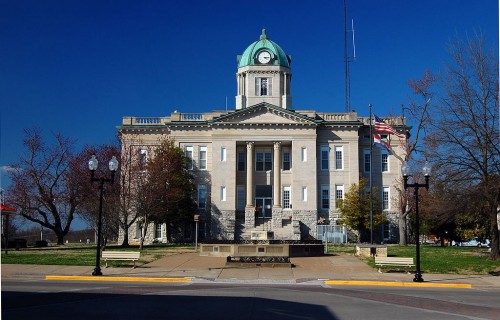 I wonder if anybody will be dunking teabags in the fountain to carry on the tradition?
I wonder if anybody will be dunking teabags in the fountain to carry on the tradition?
Took 40 years to clean the skylight
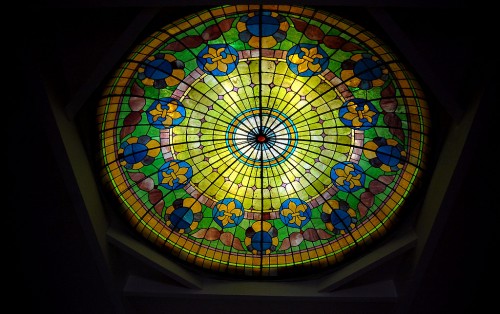 I used my quest for Jackson’s Hanging Tree as an excuse to wander around in the old courthouse. The old art glass skylight is still impressive.
I used my quest for Jackson’s Hanging Tree as an excuse to wander around in the old courthouse. The old art glass skylight is still impressive.
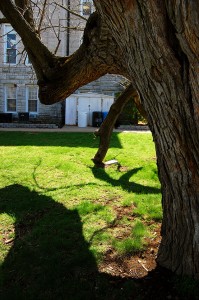 The Dec. 16, 1949, Missourian had a story that the skylight had been cleaned for the first time in 40 years. “A washing compound for glass with a sponge was used by Thomas Brothers, in charge of the interior decorating of the building. Covered with a film of black smoke and dust, the pretty color had been hidden from view. Jackson children who had grown to manhood and womanhood had never seen the glass of the dome clear and bright.”
The Dec. 16, 1949, Missourian had a story that the skylight had been cleaned for the first time in 40 years. “A washing compound for glass with a sponge was used by Thomas Brothers, in charge of the interior decorating of the building. Covered with a film of black smoke and dust, the pretty color had been hidden from view. Jackson children who had grown to manhood and womanhood had never seen the glass of the dome clear and bright.”
“Each small piece of the art glass is held in place with lead and since they are fragile, the workman was cautious and expected to spend many hours on the high ladder for the cleaning.”
1870-era courthouse had basement privy
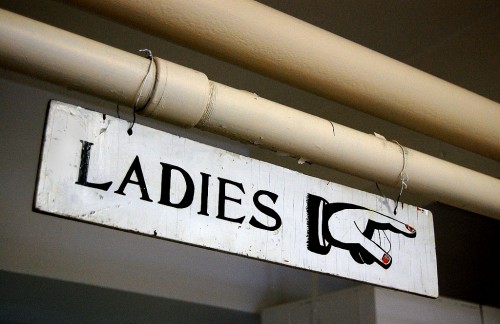 This sign looks like they might have moved it over when the 1908 courthouse was built.
This sign looks like they might have moved it over when the 1908 courthouse was built.
Contractors shaved some corners
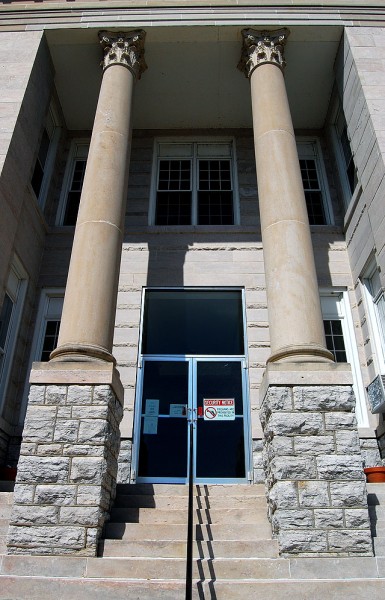 Records show that the contractors used columns that were composed of several pieces instead of one at the main entrances.
Records show that the contractors used columns that were composed of several pieces instead of one at the main entrances.
One of the goals was to make the building as fireproof as possible. Wood construction had been used in the dome, but the Court agreed to pay an additional $3,000 to remove the wood in the dome and replace it with metal. All of the parts of the dome, except the part where stone was exposed was to be covered in copper.
Wood floors replaced with mosaic tile
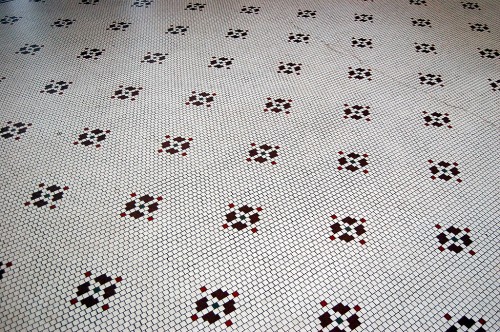 The contractors tried to slip in wooden floors, but they were required to put in ceramic mosaic tile as specified.
The contractors tried to slip in wooden floors, but they were required to put in ceramic mosaic tile as specified.
Tile has held up well
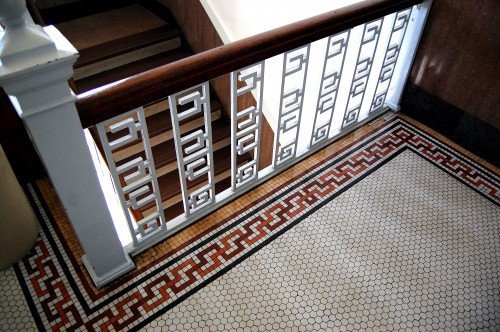 Despite the thousands of feet pacing on it, the tile floors have held up well.
Despite the thousands of feet pacing on it, the tile floors have held up well.
Much stone came from Cape and Jackson
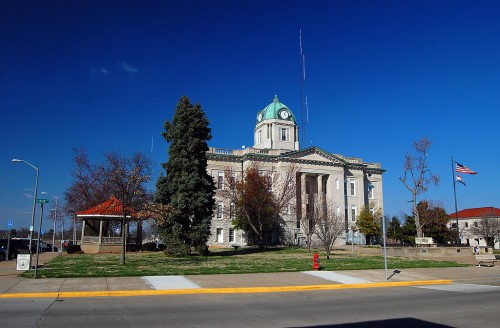 The Jackson Post & Cashbook quoted workman William Craig that “blue limestone was quarried near Jackson and was hand cut on site. The white limestone of the second and third stories was quarried at Cape Girardeau near the old Normal School (Southeast Missouri State University today).” Some of the sheets were 10’x10’x4.
The Jackson Post & Cashbook quoted workman William Craig that “blue limestone was quarried near Jackson and was hand cut on site. The white limestone of the second and third stories was quarried at Cape Girardeau near the old Normal School (Southeast Missouri State University today).” Some of the sheets were 10’x10’x4.
The steps were also quarried near Cape. The cornice stone is from Bedford, Ind.; the wainscoating is of Tennessee marble and the columns are Bedford stone.
View toward downtown
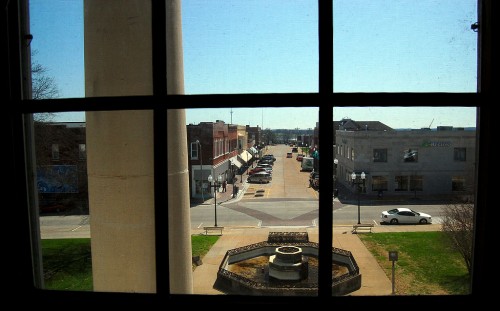 This is looking south from the second floor toward the Jackson’s downtown.
This is looking south from the second floor toward the Jackson’s downtown.
World War I Memorial
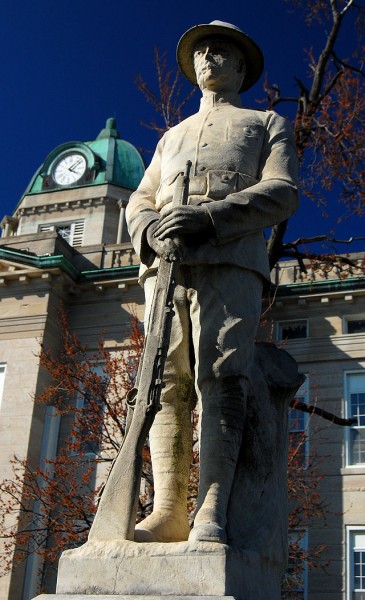 I wrote about the memorial to the Cape County World War I dead earlier.
I wrote about the memorial to the Cape County World War I dead earlier.
Gallery of Jackson Courthouse photos
Click on any image to make it larger, then click on the left or right side of the photo to move through the gallery.

